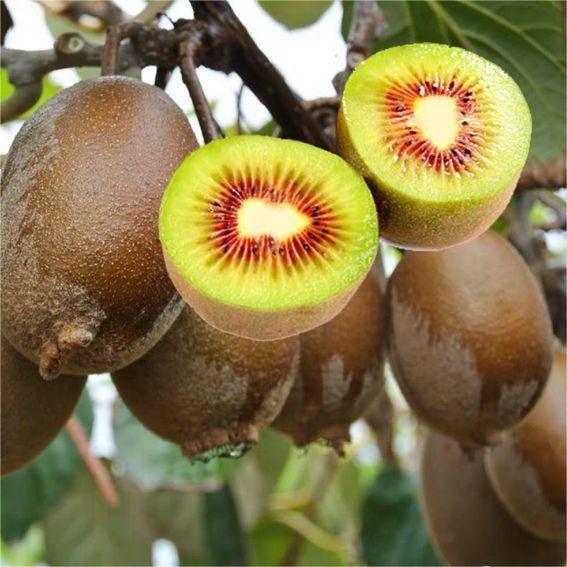Author Introduction:
Write by ANHUI FUYANG JINFENG ECOAGRICULTURE CO.,LTD., where gardening expertise meets premium quality plants and trees! With over 30 years of experience, we’ve cultivated a reputation as specialists in providing top-notch flora for all your gardening needs. What began with a few humble plastic greenhouses has blossomed into a sprawling operation spanning about 300 acres.

Kiwifruit, with its vibrant green flesh and sweet-tart flavor, is a delightful addition to any fruit garden. Whether you’re an experienced gardener or a beginner, growing kiwifruit can be a rewarding and enjoyable experience. In this comprehen
-
Choosing a Variety:
Before embarking on your kiwifruit-growing journey, it’s important to select a variety that suits your climate and preferences. The two main types of kiwifruit are the fuzzy kiwifruit (Actinidia deliciosa) and the smooth kiwifruit (Actinidia chinensis). Fuzzy kiwifruit is the most common type, while smooth kiwifruit is known for its sweeter taste and smoother texture.
-
Planting:
Kiwifruit vines thrive in well-draining soil that is rich in organic matter. Plant them in the spring, after the last frost, in an area that receives full sun. The soil should have a pH between 5.5 and 7.5. If the soil is too acidic, you can raise the pH by adding lime. Train the vines to grow on a sturdy trellis system, spacing them about 10 feet apart.
-
Watering:
Kiwifruit vines require regular watering, especially during the growing season. They prefer moist soil but cannot tolerate standing water. Water deeply and infrequently to encourage deep root growth. Mulching around the base of the plants can help retain moisture and suppress weed growth.
-
Fertilizing:
To ensure a bountiful harvest, kiwifruit vines need regular fertilization. Apply a balanced fertilizer, such as a 10-10-10 or 20-20-20, every 4-6 weeks during the growing season. Follow the manufacturer’s instructions for application rates. Additionally, incorporating organic matter, such as compost, into the soil before planting can provide long-term nutrient benefits.
-
Pruning:
Pruning is essential for maintaining the health and productivity of kiwifruit vines. Winter pruning, while the vines are dormant, involves removing dead or diseased wood, thinning out overcrowded branches, and shaping the vine. Summer pruning focuses on controlling excessive growth, redirecting energy towards fruit production, and maintaining the size and shape of the vine.

-
Pollination:
Kiwifruit plants are dioecious, meaning they have separate male and female plants. To ensure fruit production, it’s important to have both male and female plants in close proximity for pollination. While some kiwifruit varieties are self-fertile, having a male plant nearby can increase fruit set and yield.
-
Pest and Disease Management:
Like any fruit crop, kiwifruit is susceptible to pests and diseases. Common pests include aphids, mites, scale insects, and caterpillars. Regular monitoring, early detection, and implementing integrated pest management (IPM) practices can help control pests effectively. Diseases such as bacterial canker, powdery mildew, and root rot can be managed through proper sanitation, disease-resistant varieties, and, if necessary, the judicious use of fungicides.
-
Harvesting and Storage:
Kiwifruit is typically harvested in the fall, between September and November, when the fruit is fully ripe. The fruit should be firm but yield to gentle pressure. If picked too early, the fruit may not ripen properly. After harvesting, kiwifruit can be stored in a cool, dry place for a few weeks. However, it’s best to consume them as soon as possible for the freshest flavor and texture.
Conclusion:
Growing kiwifruit requires careful attention to detail and proper management, but with the right techniques, you can enjoy a bountiful harvest of delicious fruit. From selecting the right variety to providing optimal growing conditions, practicing good pruning techniques, and implementing pest and disease control measures, you’ll be well on your way to a successful kiwifruit garden. Remember to adapt your approach based on your specific climate and seek guidance from local experts for additional support. Happy kiwifruit growing!
